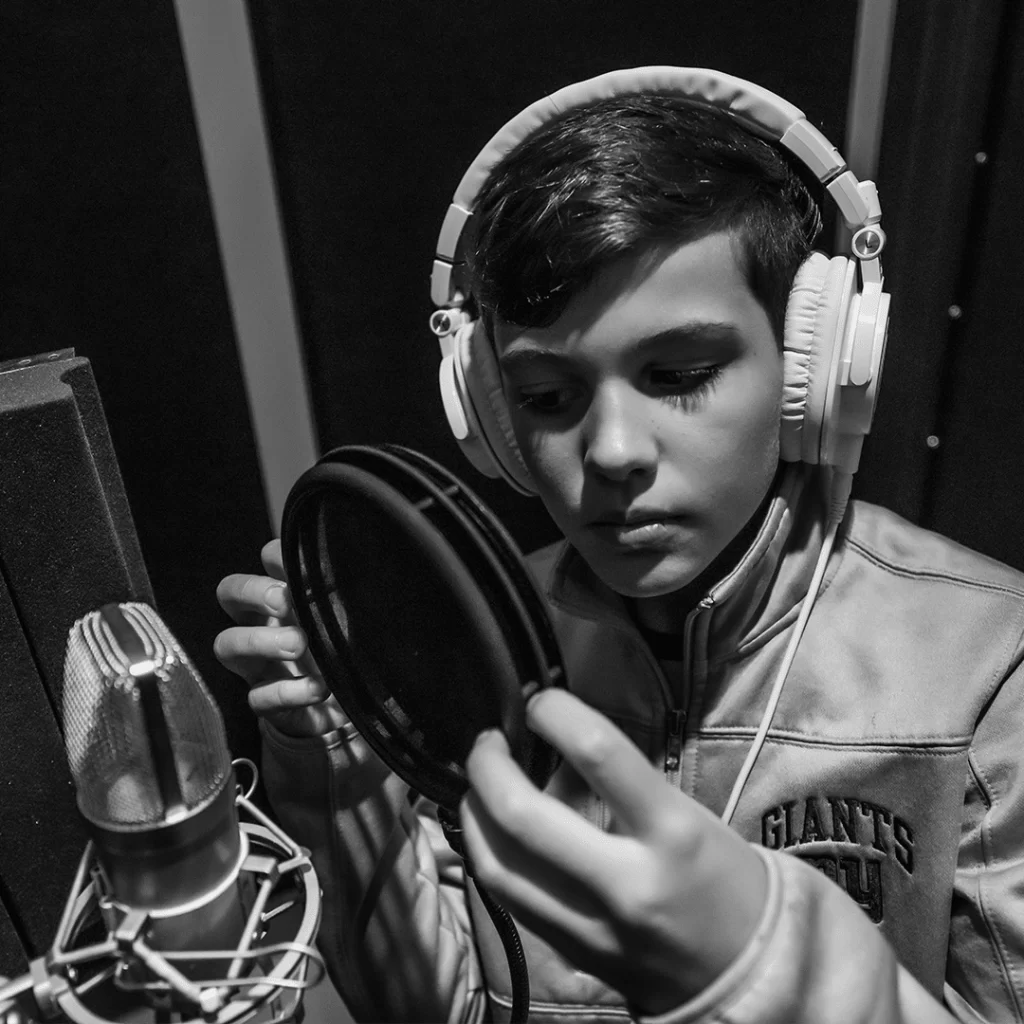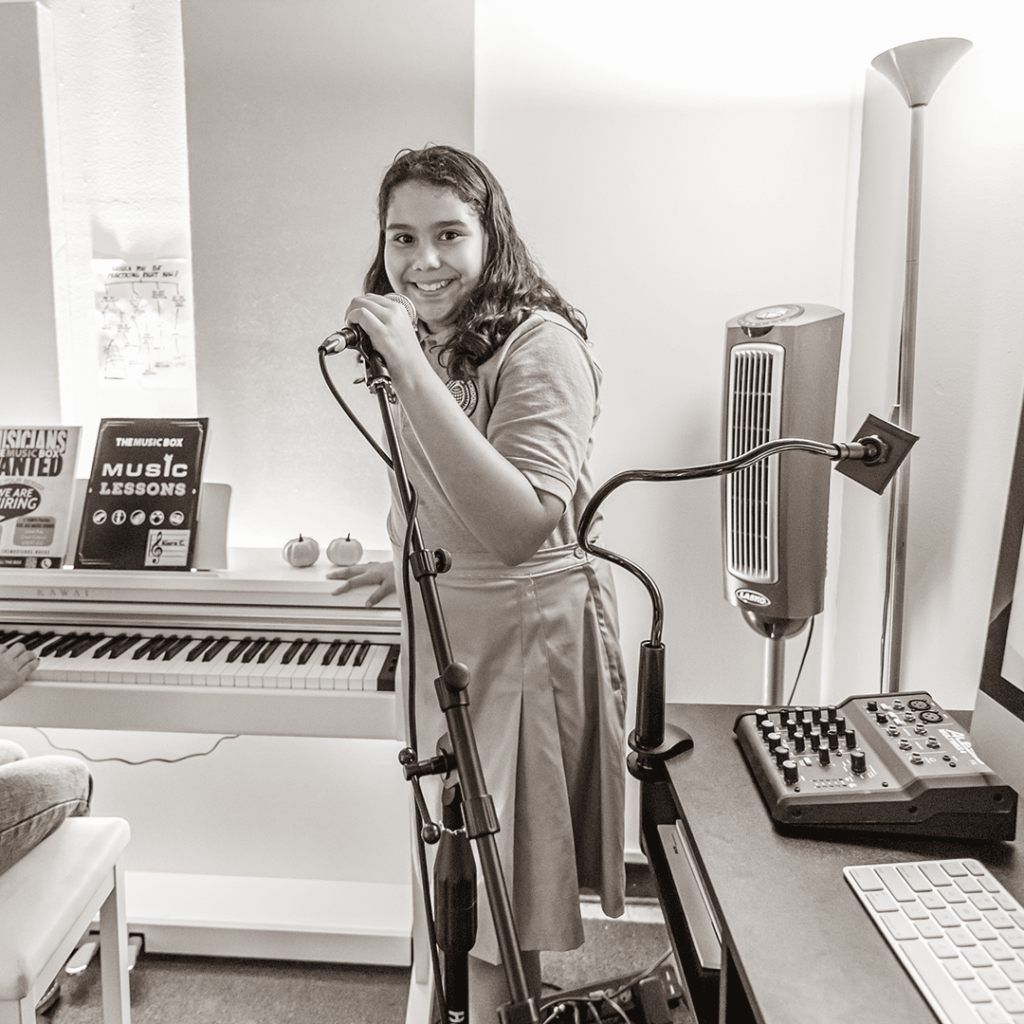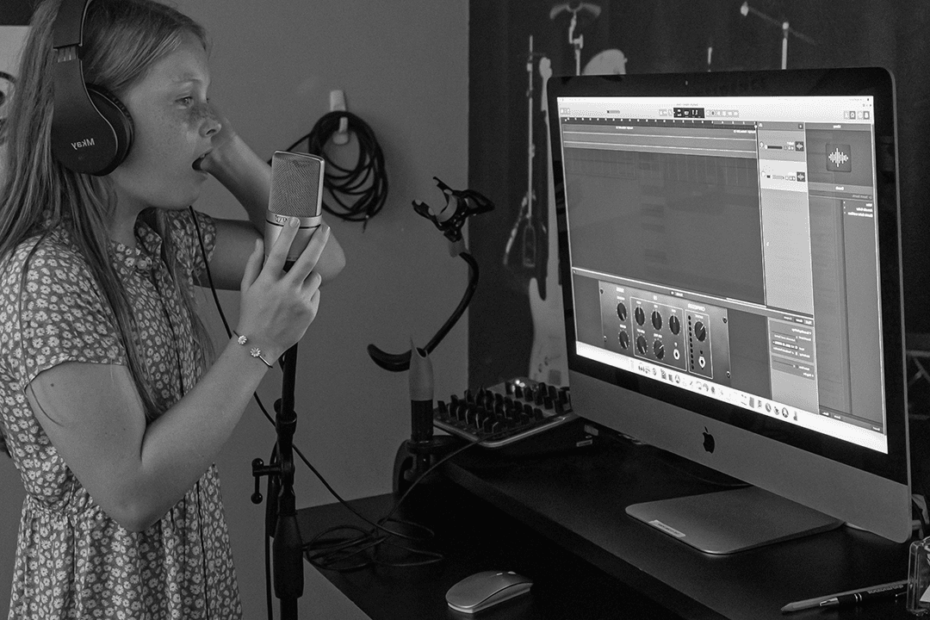While guitarists need to think about always having replacement strings and an array of pedals, not to mention the drummers who are constantly upgrading their arsenal of cymbals, singers have a much easier job – they only need a good microphone.
The thing is, there are dozens of microphone types, and choosing the one that will enable the singer to sound their best can be a bit tricky. Professionals usually have dozens of different mics – one for live performances, one for the studio, one for rehearsals, and a few that may come in handy in all other cases.
We’re The Music Box, the leading Tampa-based vocal music school, and we’re here to help you learn everything there is to know about microphones for singers. In this article, you’ll find out the main advantages and shortcomings of different mic types, so let’s dive straight into it.
Dynamic Microphone
The most popular type of microphone for musicians (as a whole, not just singers) is the dynamic microphone. They’re usually very affordable and don’t need a separate power source to function, which is why beginners love them.
Furthermore, dynamic microphones are highly versatile. You can do pretty much everything with them, whether it be recording your vocal tracks, singing at live venues, or rehearsing with your band.
Even though they can fit a range of different scenarios, they hardly excel in any. One of the main drawbacks that can be ascribed to virtually any dynamic microphone is the lack of highs. These microphones struggle to capture higher frequencies as vividly.
The well-rounded performance of even the cheapest of dynamic microphones makes them so popular. They’re at least “good” at everything except live recordings. If you want to learn more about the singing techniques and exercises that work best with each microphone type, swing by our Facebook page.

Condenser Microphone
Often considered the “polar opposite” of dynamic microphones, condenser mics are usually a bit more expensive and more “specialist” microphones.
First of all, condenser mics need a separate power source (typically phantom power of around 48 volts) to work. However, this extra power enables condenser microphones to capture even the most delicate details with ease.
Their ability to recognize, pick up, and ultimately convert these details into sound depends on their polar (directional) pattern. The best feature of condenser mics is that they can change the directional pattern to be better suited for a particular scenario.
That’s why they’re considered “specialist” microphones. They require a bit of fine-tuning and skill to use and master, but they’re far more adaptable than most microphone types.
Condenser microphones have a few flaws that we strive to educate our students about as early as possible. Namely, condenser mics aren’t meant to be used in exceedingly loud environments. Their construction features delicate hardware that can degrade under heavy sonic pressure, plus they’re so good at picking up tiny details that they’ll also pick up unwanted noise.
They’re unrivaled for recording vocal tracks, though. Whether you’re recording a demo with the entire band or if you’re singing in a vocal booth by yourself, a condenser microphone will be your best friend. Check out our Instagram page if you want to hear our students rocking out and applying this knowledge in real life.
Shotgun Microphones
One of the best schoolbook examples of a shotgun microphone is the one that you’ll often see in the hands of sound crews micing news reporters and journalists. Even though they can be huge and bulky, dozens of premium brands have made more streamlined models (like Sony ECM 680S or Audio Technica B4073).
Shotgun microphones aren’t as popular as dynamic or condenser microphones due to their size and weight. Although they can be handheld, their laser-focused cardioid pattern won’t perform as intended if the singer is moving.
Unlike more “conventional” microphone types, shotgun microphones are designed to pick up the sounds coming from a very narrow direction. They completely ignore the noises coming from the sides and will vividly reproduce the sound their heads are pointing toward.
Singer-songwriters who like performing from a seated position often use them, especially if they’re playing an acoustic instrument (that spreads the sound everywhere). These microphones are perfect for live performances, especially if the band doesn’t use on-stage monitors and IEMs, but they’re equally great for recording vocals, even if the room isn’t soundproof.
There are many smaller shotgun mics that are a bit more practical to use, such as Sony’s ECM B10 or Zoom’s famous M3 MicTrack, but they’re generally large and rather unwieldy. Check out our TikTok page if you want to learn more about vocal microphone types.

Omnidirectional Microphones
The term “omnidirectional” refers to the pickup pattern of a microphone. Any mic can be omnidirectional if it is configured that way, but the particularity of this pickup pattern is so dissimilar to the alternatives that it deserves a category of its own.
Omnidirectional microphones pick up sounds in a wide scope. These microphones are meant to reproduce sounds in a given area as they are, although they are far less accurate than dynamic and condenser microphones with unidirectional patterns.
If you want to hear how the entire band sounds without putting too much focus on any given instrument, an omnidirectional microphone is the tool you need. Vocalists don’t need to sing directly into this mic to sound good, but they’ll usually need a few minutes to find the right spot where they won’t be too loud (or too silent).
Recording live gigs is rarely done with omnidirectional microphones, but this is a viable option if you don’t have access to multiple unidirectional mics.
Join The Music Box & Polish Your Singing Talents
Now that you know how different types of microphones work, you may want to learn how to properly use them. We’re The Music Box, and we offer premium quality vocal education to kids, teens, and adults. You can find our HQ at 4321 Gunn Highway in Carrollwood, Tampa, or contact us online by following this link.



